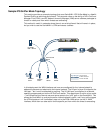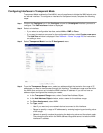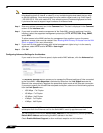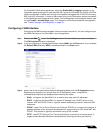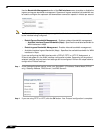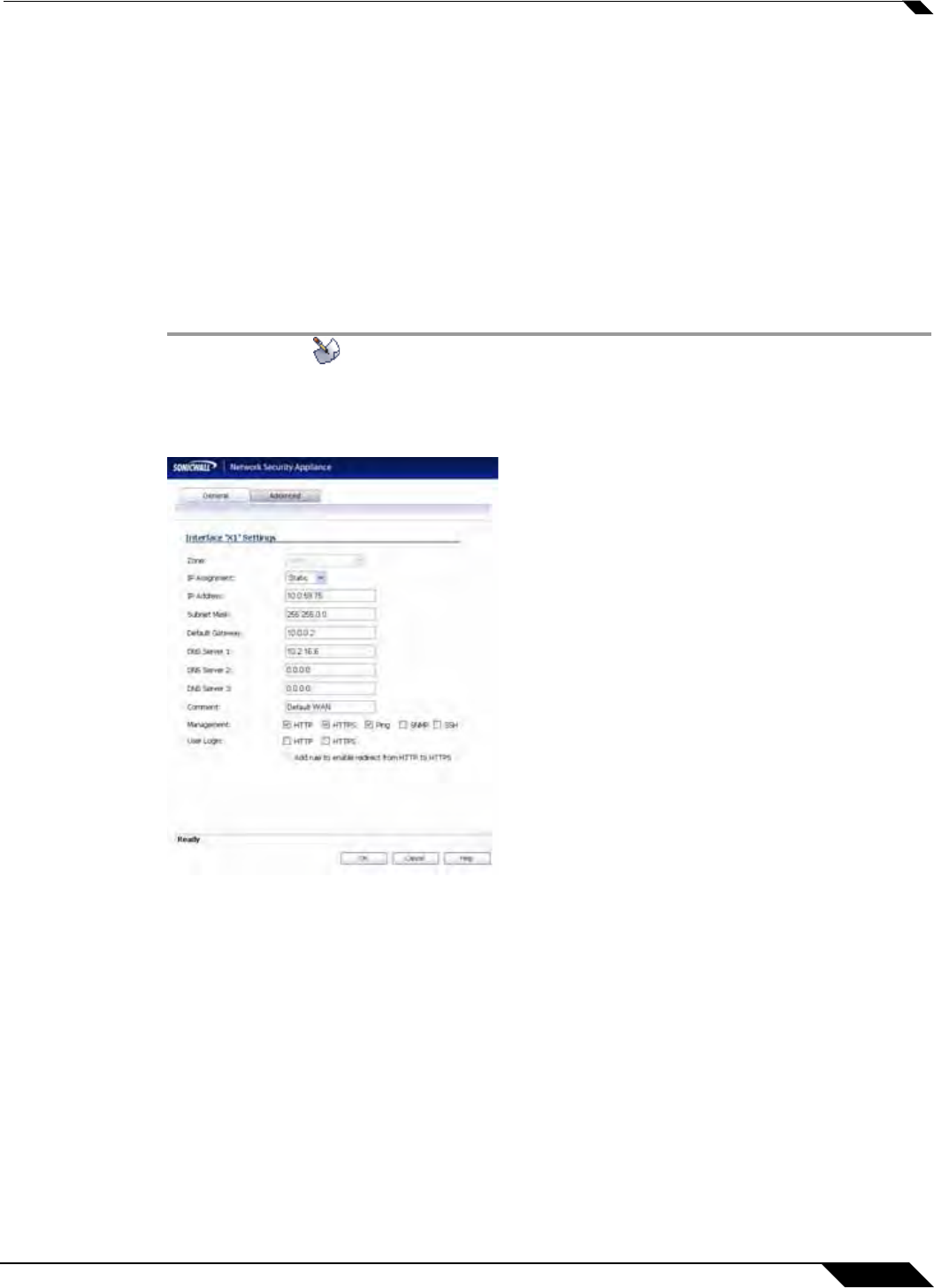
Network > Interfaces
225
SonicOS 5.8.1 Administrator Guide
On SonicWALL NSA series appliances, select the Enable 802.1p tagging checkbox to tag
information passing through this interface with 802.1p priority information for Quality of Service
(QoS) management. Packets sent through this interface are tagged with VLAN id=0 and carry
802.1p priority information. In order to make use of this priority information, devices connected
to this interface should support priority frames. QoS management is controlled by access rules
on the Firewall > Access Rules page. For information on QoS and bandwidth management,
see “Firewall Settings > QoS Mapping” on page 751.
Configuring a WAN Interface
Configuring the WAN interface enables Internet connect connectivity. You can configure up to
two WAN interfaces on the SonicWALL security appliance.
Step 1 Click on the Edit icon in the Configure column for the Interface you want to configure.
The Edit Interfac
e window is displayed.
Step 2 If you’re configuring an Unassigned Interface, select WAN from the Zone menu. If you selected
the Default WAN Interface, WAN is already selected in the Zone menu.
Step 3 Select one of the following WAN Network Addressing Mode from the IP Assignment menu.
Depending on the option you choose from the IP Assignment menu, complete the
corresponding fields that are displayed after selecting the option.
• Static - configures the SonicWALL for a network that uses static IP addresses.
• DHCP - configures the SonicWALL to request IP settings from a DHCP server on the
Internet. NAT with DHCP Client is a typical network addressing mode for cable and DSL
customers.
• PPPoE - uses Point to Point Protocol over Ethernet (PPPoE) to connect to the Internet. If
desktop software and a username and password is required by your ISP, select NAT with
PPPoE. This protocol is typically found when using a DSL modem.
• PPTP - uses PPTP (Point to Point Tunneling Protocol) to connect to a remote server. It
supports older Microsoft Windows implementations requiring tunneling connectivity.



